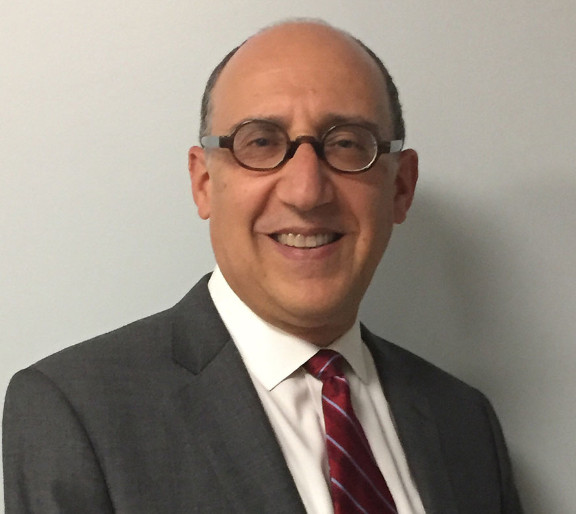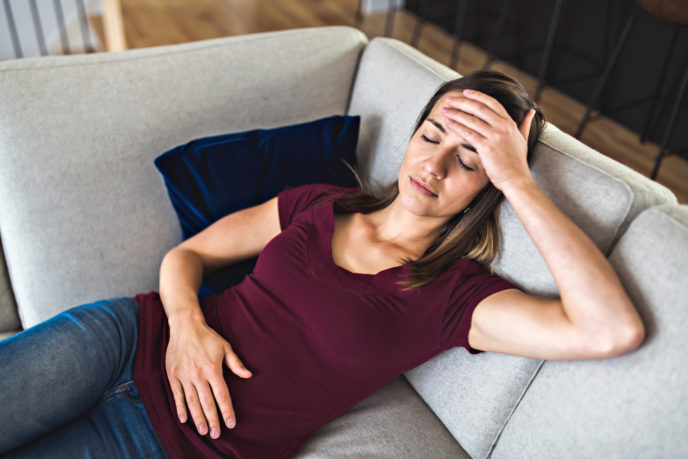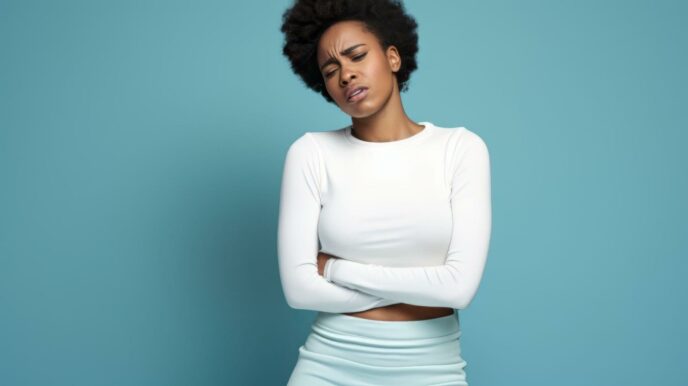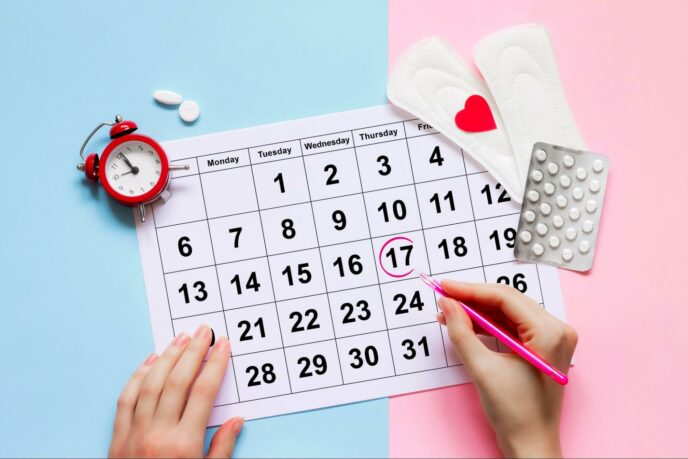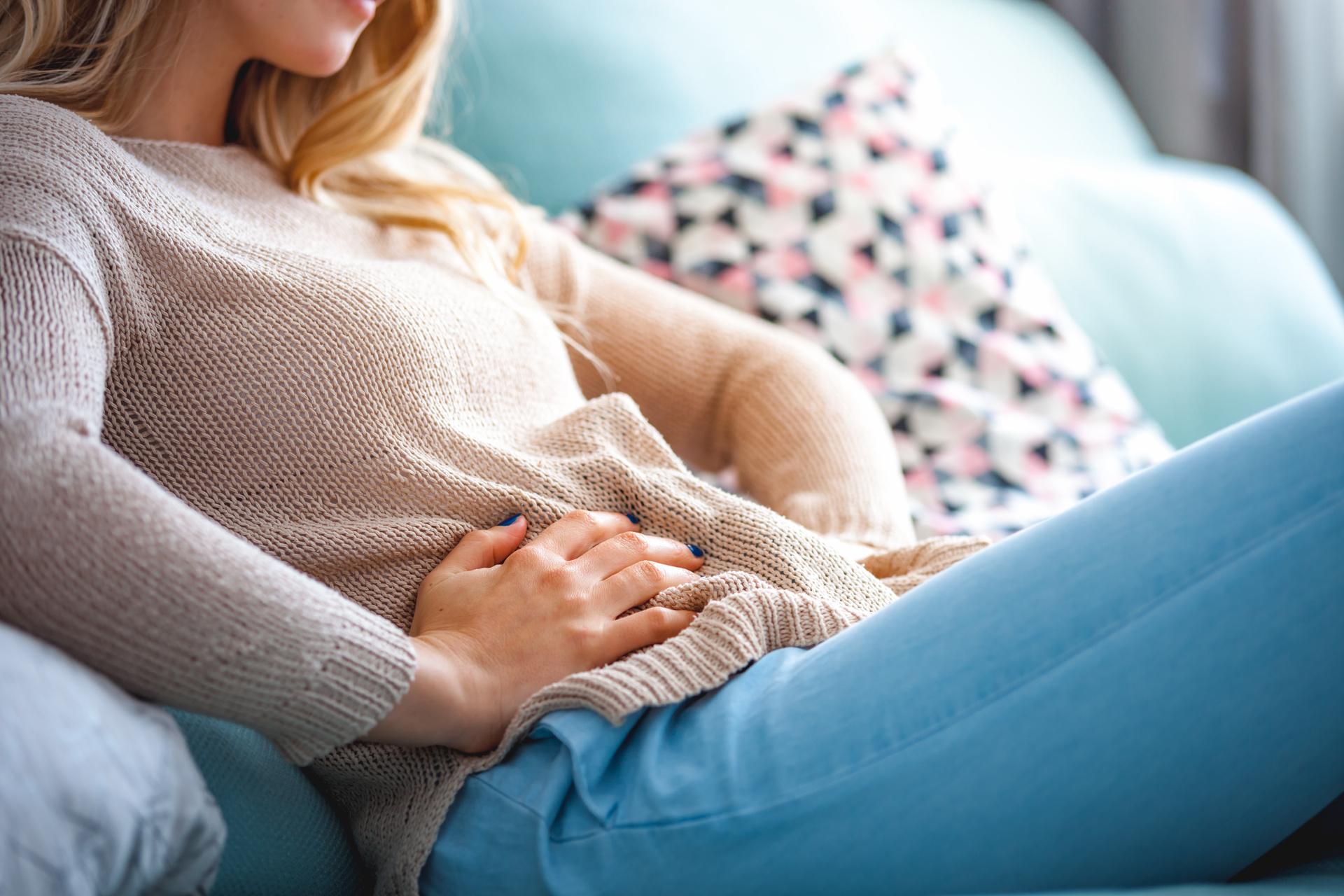
What are the Symptoms of Uterine Fibroids?
Women with uterine fibroids usually do not experience any symptoms or require medical care. But if symptoms do arise, they can significantly affect your quality of life and long-term health. The severity of your symptoms will depend on the location, size, and number of fibroids present in the uterus.
If you think you might have fibroids, it’s important to schedule a consultation with an affiliated physician at American Fibroid Centers to receive an accurate diagnosis. Once fibroids are confirmed, our team will develop a personalized treatment plan based on your specific needs.
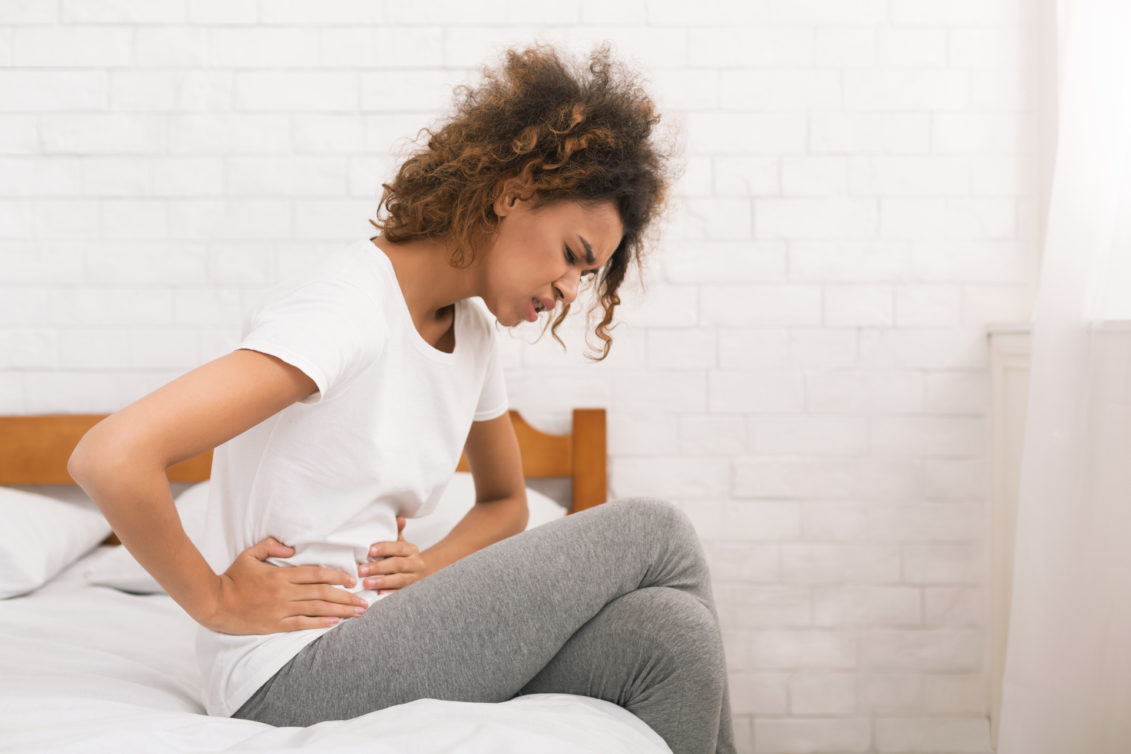
Common Uterine Fibroids Symptoms
Fibroids typically show up in women in their 20-30’s, while most become symptomatic in their late 30s or early 40s but can last into their 50’s. The symptoms women experience as a result of the fibroids can be debilitating. Fibroids can cause excessive bleeding and lead to low red blood cell count, called anemia. Women with anemia can feel extremely tired, but are forced to get up and go to work and take care of the household.
In order to stay awake, they may drink significant amount of caffeine and eat sugary foods/drinks to stay awake leading to unwanted weight gain. Obesity can result in higher levels of estrogen which can cause the fibroids to grow even further. On top of that, large fibroids put pressure on the surrounding organs in the pelvis leading to frequent urination, constipation, pelvic and back pain, and pain during sexual intercourse. Inmany cases, women with fibroids can feel the bulge in their lower abdomen and pelvis similar to feeling their growing uterus when being pregnant.
Abnormal Bleeding
Fibroids recruit blood vessels and absorb blood from the circulation similar to a sponge absorbing water. During menses, the blood releases from the large reservoirs and results in excessive bleeding that can last more than 7 days and require multiple changes in pads and tampons. The bleeding can difficult to manage to the point that women don’t feel comfortable being out in public for fear of embarrassment from outward bleeding. The fibroids located closer to the uterine cavity tend to cause most of the problems with bleeding. In addition, if the uterus does not contract properly, it’s unable to stop the bleeding.
Anemia
As we know, some women experience heavy bleeding due to their uterine fibroids. This excessive blood loss can lead to anemia, which results from a lack of supply of healthy red blood cells in the body. Different types of fibroids may cause more bleeding than others. The good news is that both fibroids and anemia are treatable to improve your quality of life.
Lower Abdominal Pain or Pressure
Understandably, many women confuse fibroid pain with normal menstrual cramps. Fibroid pain most often occurs in women with large uterine fibroids. Some may experience chronic abdominal pain from their fibroids, making it difficult to move or perform normal tasks. You may also feel a heaviness or pressure in your lower abdomen that is more uncomfortable than painful. The pressure that large fibroids have on surrounding organs is responsible for the back pain, need to pee often, pain during sex, and constipation.
Frequent Urination
The most common bladder symptom of uterine fibroids is needing to urinate frequently. As fibroids grow, they can expand the uterus which compresses the bladder and reduces its capacity. This can be a stressful and unpleasant feeling, causing you to always be searching for a nearby restroom, constantly waking up in the middle of the night, or canceling plans or shifting your schedule based on your physical needs.
Pain During Sexual Intercourse
Uterine fibroids can make sex painful or uncomfortable. The pain may occur in only specific positions or at certain times during the menstrual cycle. Along with affecting your physical well-being, pain during sex can negatively impact your emotional relationships. If your doctor doesn’t ask about this symptom, be sure to mention it during your consultation.
Severe Menstrual Cramps
Aside from heavy and irregular bleeding, fibroids can lead to other symptoms such as painful cramping in the abdomen and back. During your period, the uterus contracts to get rid of the blood and lining of the uterine cavity.. Hormone-like substances called prostaglandins trigger pain and inflammation during these contractions. The presence of Fibroids are linked to higher levels of prostaglandins, causing more intense and prolonged cramping. “Retrograde” menstruation, or back flow of menstrual blood into your insides (the peritoneal cavity) may occur contributing to severe cramps and pain since blood is very irritating to this area.
Early Fibroid Symptoms
Uterine fibroids are benign (non-cancerous) tumors and are often asymptomatic in the early stages. Many women are not even aware that they have fibroids. Early signs of fibroids are easy to miss and may even be confused with other common uterine conditions. Early symptoms may include:
- Mild pelvic pain
- Lower back pain
- Mild abdominal pain or pressure
- Heavy or prolonged menstrual bleeding
- Spotting or bleeding between periods
Advanced Fibroid Symptoms
Fibroids produce different symptoms based on their size, number, and location. Larger fibroids can lead to pelvic pain, frequent urination, and pain during sex, among other symptoms. Rapidly growing fibroids, or those that start breaking down, can also cause pain. More advanced fibroid symptoms include:
- Severe pelvic, abdominal, and/or back pain
- Pain during sexual intercourse
- Frequent urination and/or constipation
- Severe and prolonged menstrual bleeding
- Anemia and associated symptoms of anemia such as fatigue, dizziness, shortness of breath, cold hands and feet, chest pain, irregular heart beats, and skin pallor.
Uterine Fibroids Symptoms FAQS
In most cases, women don’t realize that they have uterine fibroids. Fibroids are rarely considered dangerous and usually do not produce any symptoms. However, symptoms vary by individual and family background. Specifically, there appears to be racial disparities when it comes to fibroids, and the cause of the disparities are not yet clearly known.
Although fibroids can occur in women of any racial background, studies show that “African American women have three times the risk for developing leiomyoma when compared with white women. They are more likely to be diagnosed with uterine fibroids at an earlier age, and have larger and more rapidly growing fibroids. They suffer from more severe symptoms (bleeding and pelvic pain) compared with white women. In addition, African American women tend to undergo surgical treatment more often. There are also ethnic differences in response to treatment, as well as treatment complications.” 1
Women with larger fibroids may feel heaviness in their lower abdomen or pelvis, which is often described as a vague discomfort rather than a sharp pain. Sometimes, if your uterus becomes enlarged, you may experience discomfort when bending down or exercising.
Uterine fibroids are typically rounded growths that look like nodules of smooth muscle tissue. In some cases, they can be attached with a stem, giving them a mushroom-like appearance. Fibroids may grow as a single nodule or in a cluster. Fibroid clusters can range in size from 1 mm or a pea size, to the size of lemon and oranges, to as large as a football. The growth of a uterus full of fibroids can make a woman appear pregnant and feel bloated. Several types of fibroids can grow throughout the uterus, including intramural, subserosal, submucosal, and pedunculated fibroids. The types of uterine fibroids vary in size, but some can grow large enough to press against neighboring organs.
If left untreated, uterine fibroids can continue to grow, both in size and number. As your fibroids take over the uterus, your symptoms will become worse. Fibroid pain will increase, menstrual bleeding will become heavier, and menstrual cramping will intensify, among other things. Also, the abdomen can swell, putting additional pressure on the bladder, colon, nerves and lower spine, and causing symptoms such as incontinence or frequent urination, constipation, and back pain.
Our Fibroid Specialists
American Fibroid Centers comprises board-certified, affiliated physicians specializing in uterine fibroid treatment. Among the nation’s most respected providers of endovascular procedures, such as Uterine Fibroid Embolization (UFE), our team is here to help you find relief for fibroid pain and other symptoms. Find your nearest location to meet with a fibroid specialist in NY or NJ today.
What Our Patients Are Saying
Learn more about our patients’ experiences at American Fibroid Centers.
From the Experts
Get to know more about the symptoms, causes, treatment, and care of Uterine Fibroids.
References
1. Catherino, W. H., Eltoukhi, H. M., & Al-Hendy, A. (2013). Racial and Ethnic Differences in the Pathogenesis and Clinical Manifestations of Uterine Leiomyoma. Seminars in reproductive medicine, 31(5), 370. https://doi.org/10.1055/s-0033-1348896





